Originally published in the Iron Feather Journal 2016 by Dave Alexander.
If you are a Millennial then you are at least two generations too old to remember most of these toys, but for those born in the 1950’s through 1980’s you will probably remember many of these toys during your formative years. What you may not realize is that these toys made their sounds, unlike today via computer chips, through a mechanical means using built in records and phonographs!
The phonograph-based toy started in the late 1950’s when the fastest growing toy company, Mattel, started to produce dolls that interact with their owners. Barbie was a huge seller for Mattel but it lacked interaction which left a lot to the girl’s imagination. The Chatty series of dolls solved this problem and started a new era of dolls. In 1959 the idea of pulling a string on your doll would and having her speak one of 11 phrases at random to you was ingenious! Later models towards the mid-1960s would speak 18 different phrases. This was accomplished by dropping a needle on a small 3 inch record in random locations—the player was installed in the doll’s abdomen and was a wonder of engineering at the time. These dolls was an instant success and their underlying phonograph technology was used over and over in many toys by Mattel and other companies through the 1980s.
In 1963, after many successful years with the various Chatty dolls, Mattel introduced Charmin’ Chatty. This doll was a bit different than the others because the records were interchangeable through a slot on the doll’s side. The 3 inch records were double-sided, so you had twice as many phrases per record. Records and clothing were sold as accessories, including the ultra-collectable “Let’s Talk ‘n Travel in Foreign Lands” which included a cute “travel” outfit accompanied by 4 records speaking in 7 different languages—instantly giving the doll and her owner world culture! Since the phonograph played random tracks when the string was pulled, Mattel released the “Chatty Games” accessories. Each box included two games; with 4 total games where a random move was spoken by Charmin’ Chatty, kids could play up to 8 different games with their dolls. In 1965 Mattel discontinued production of these dolls, but continued to innovate with their phonograph-based interactive toys.
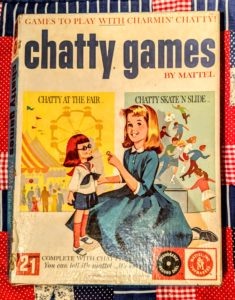
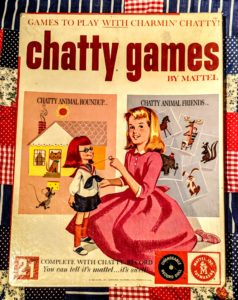
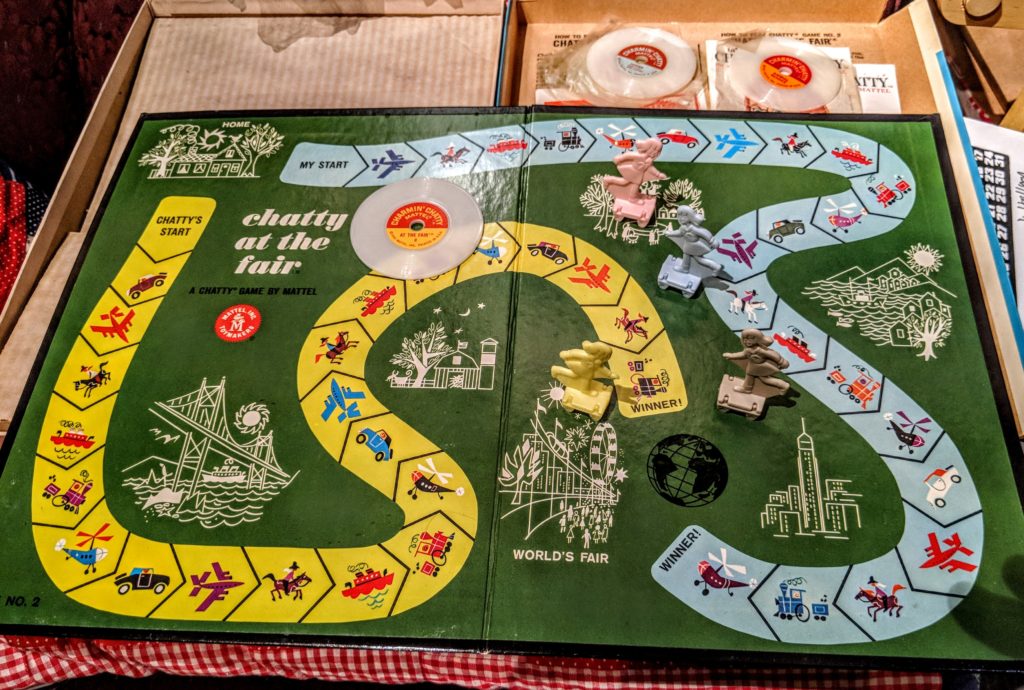
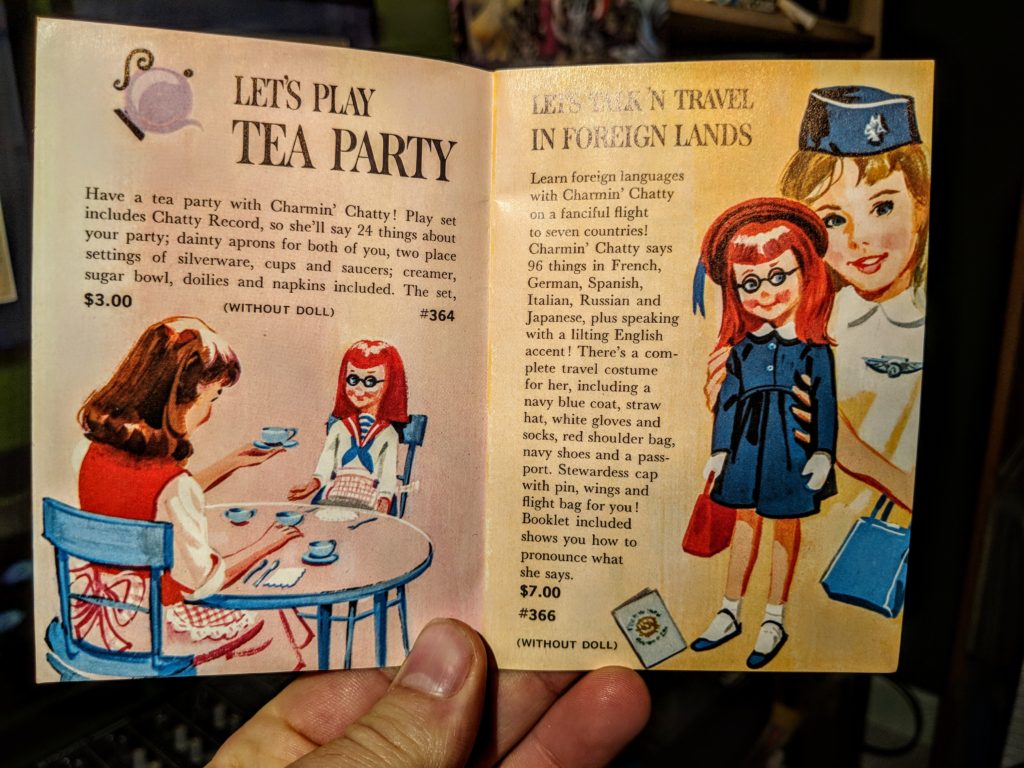
After the success with the Chatty dolls, in 1965 Mattel created the See‘N Say toys line of toys providing similar interaction with the toy, but this time the child had control over which audio track would play using a dial. The kid would point the arrow at a picture and pull the string, and the phonograph player would have its needle dropped on the specific track based on the slot the dial was placed. It was the same mechanism inside the toy as the previous Chatty dolls, but with a user chosen groove instead of a random groove on the record. The initial toys were the Bee Says toy that spoke the alphabet and the Farmer Says toy that spoke farm/animal sounds. After the success of these, new variations were produced, the only difference was the sticker on the toy showing the available choices, and the phonograph record within; a clever way to sell new variations in the brand using the same manufacturing line! These toys continued popularity into the 90s where the phonographs were replaced by digital sound reproduction.
Of course, all this success didn’t go unnoticed, and other toy manufacturers joined in the dream of huge profits with their own mechanical phonograph-based toys. In 1964 General Electric joined in with a toy television with a record player on top. Inserted filmstrips were backlit to project 16mm images onto the toy television screen while the record provided audio. Picturesound programs were sold individually including a filmstrip with 15 films and a 4 minute record. At fixed intervals on the record the filmstrip would mechanically be moved to provide the next image in the story.
Meanwhile, Mattel was not done with their line of dolls and in 1971 Cynthia My Best Friend was built based on the Charmin’ Chatty technology except the doll was much smaller. She played 2 inch interchangeable records that were inserted in her side. To repeat their successful business model, Cynthia fashion kits were sold each with a new record full of phrases.
In addition to dolls, Mattel produced two different interactive phone toys. Alongside the See’N Say toys, 1965 saw the Mattel-o-Phone with interchangeable 4 inch records. Kids could have conversations with their dolls (or just by themselves) with this phone, which sported many popular cartoon characters and dolls of the day that would talk to you. Later, their 1971 Fun Phone Alphabet Phone toy was aimed at education, teaching kids using sporting colorful 2 ½ inch picture discs with the alphabet and other important things for young kids to learn over the phone. By this time, Mattel had the mechanical phonograph dialed in and they were using it in all sorts of ways to add interactive speech long before computer chips would take over!
In 1970 Ohio Art produced the “World’s Smallest Record Player” called the Mighty Tiny. This small coffin looking player opened up and the kid would insert a 2 inch plastic record. Upon closing the toy the needle on the top of the player would track on the record and would reproduce its sound through the small internal speaker powered by AA batteries. Records came in 4-packs grouped by music styles, which included “Foreign”, “Rock’n Roll”, “Country and Western”, “Novelty”, etc. Of course they encouraged people to “collect them all”.
Mattel continued the interactive experience with Live Drive in 1970. This toy has a steering wheel and gear shifter and was aimed to allow the driver to imagine driving. To help that imagination, there are cardboard backdrops attached to the “windshield” area for the visuals and records for the audio. The experiences include Racecar, Submarine, Spaceship, Airplane, Fire Engine, and Speedboat. “You can drive ‘em all!!” The battery operated interchangeable record player is very similar to the Instant Replay player mentioned below; probably the same one given they were released the same year.
In 1977 Mattel released the ABC Monday Night Football game. The game came with a football field and some plastic accessories to aid in gameplay; the main component was a record player with 2.5 inch discs, some single sided, some grooved on both sides. These discs had different offensive, defensive and penalty called plays that were recorded by the original ABC Monday Night Football commentators. Using the random needle dropping technology, the records were perfect for a football game!
Disney got in the action and produced the Mickey Mouse World Series Baseball Game in 1984. They used a special “Trick-Track” process that dropped the needle on one of 15 tracks of a 6 inch flexi-disc record. Each track played about 15 seconds of commentators that called the gameplay. The sleeve’s gatefold was used as the diamond, and small punch-out discs were used by each player to mark their progress and score. You’d play for 9 innings, or however long it would keep your attention!
Sports trading cards have been popular for a long time, and Mattel decided to use their phonograph toy technology to make sports cards interactive. In 1971 they released the Instant Reply toy, which played small 2.5 inch records that had different players talking to you. Most records were single sided with a sticker of the athlete on the front side, but there are highly collectible double-sided cardboard picture discs available as well. The proprietary record player was battery powered with a built-in speaker and used a switch for turning the player on and off. Discs were sold in either 4-packs based on sport, or 8-packs folders with small informational booklets. It was said the basketball series was the most popular, and the double-sided basketball stars can fetch hundreds of dollars in collector’s circles!
In 1989, Topps cards produced the Sports Talk player and cards. Topps released 164 talking baseball cards for that year’s popular major league athletes, and also included cards for all-time favorite players and important historical baseball events. The cards were full color with a picture of the athlete on the cover and statistics on the back, just as you’d expect; but additionally there was an embossed plastic record on the back. Once inserted and closed into the proprietary phonograph player’s transparent plastic window, the record would play and you’d hear the athlete tell you something funny or cool about their career while you looked the front of the card, or re-live important baseball history!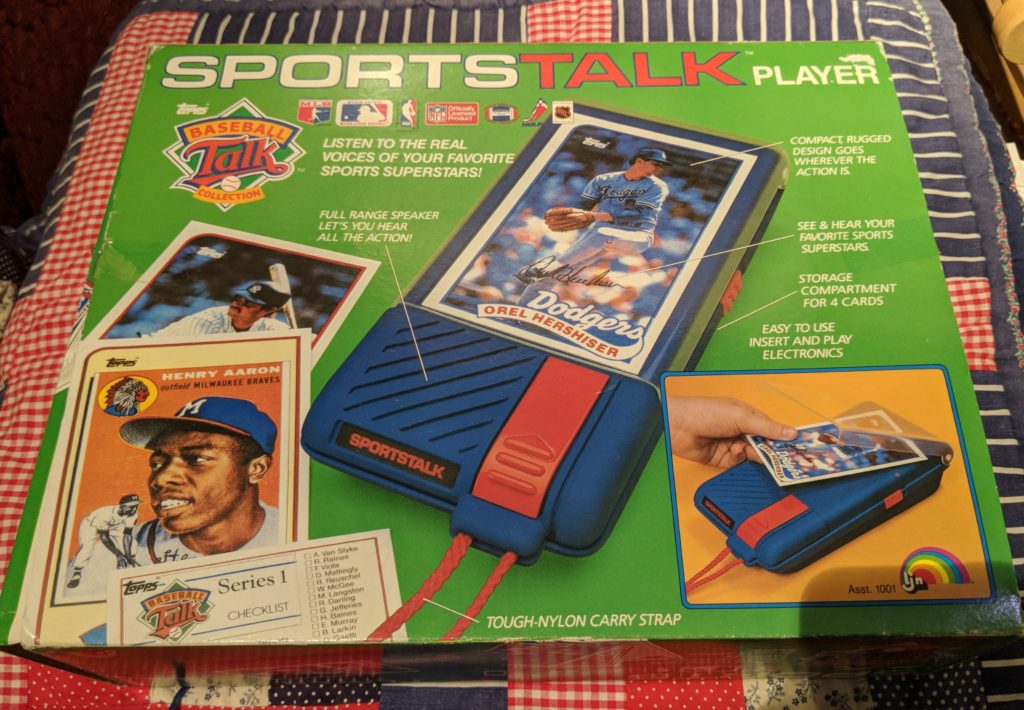
Fisher Price and Yes! companies realized there was a market for read-to-me style books for kids just learnings to read. They took popular books like Bernstein Bears and television shows like Sesame Street and added embossed 3 inch records to each page. Their record players would lay on top of the page, registered to the center of the record, then when pressing play, if properly aligned, the needle would drop and the story would be narrated. The players and books were interchangeable, no clue if this was intentional.
Perhaps the most serious attempt at a record-based educational toy was Mattel’s Teach & Learn Computer in 1981. The computer was battery powered and contained a slot for the 5 inch record and a generic touch panel. Overlays and records were purchased separately and the record and touch panel were programmed to work together interacting with the child and hopefully teaching a thing or two in the process.
Finally, my personal favorite was the Cosmic Clash arcade game released in 1982 by Tomy. This entirely mechanical game provided mechanical visuals based on back-lit cellophane film strips for aliens that you’d shoot, and the rotating back-lit cellophane cylinder laser beam you’d fire, and the op-art style explosions. The audio was played on the record where the needle was dropped in certain locations based on the sound effects that needed played. This game was a wonderfully engineered toy providing a home arcade alternative before video games entered the home.
The mechanical phonograph record used in toys lasted for well over three decades when they were finally replaced by electronics. The creative use of phonograph records allowed for interactive toys that were state of the art for the time; captivating children’s hearts and piling up wish lists at the North Pole that were mailed to Santa each year!
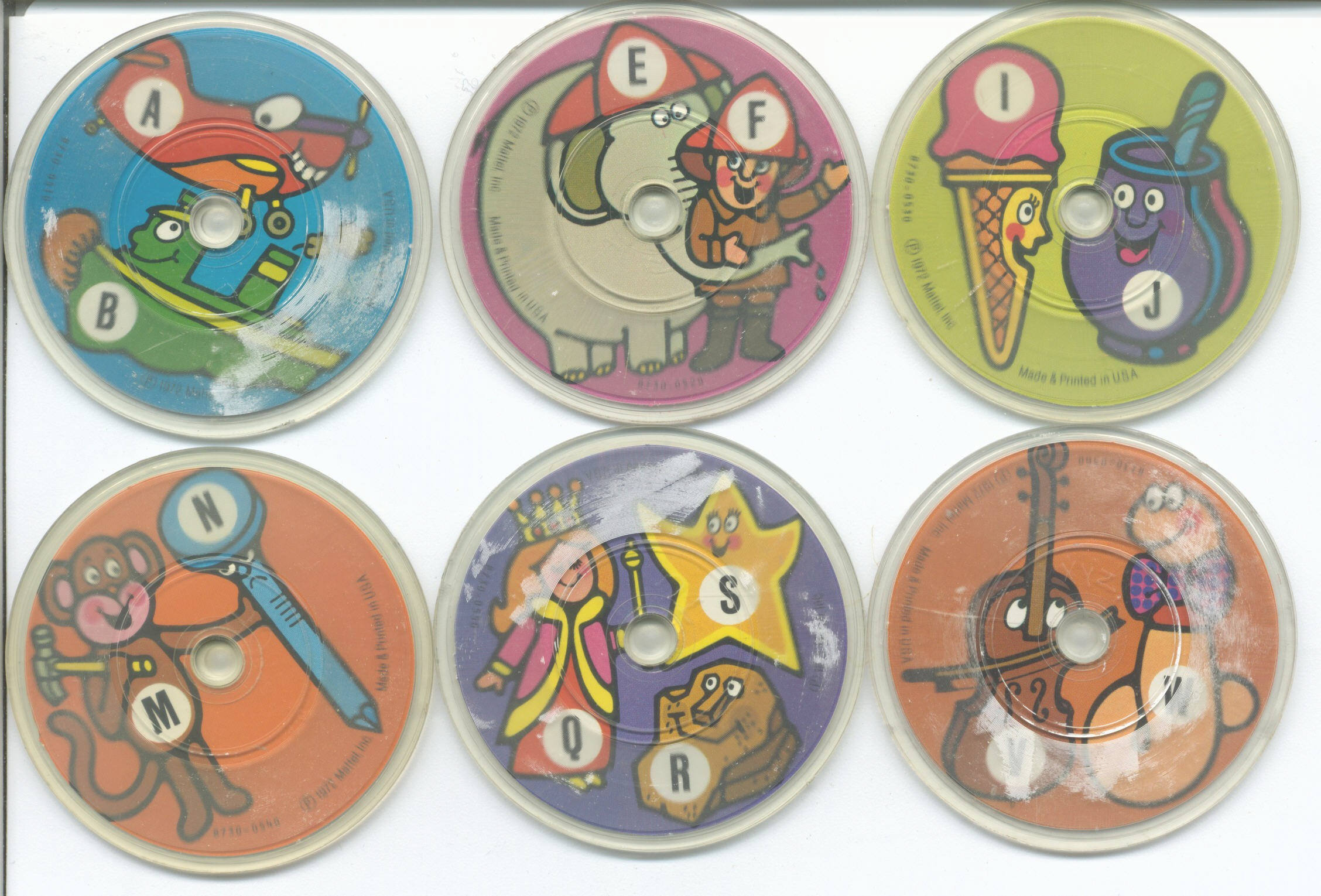

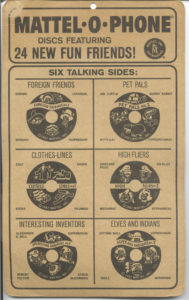
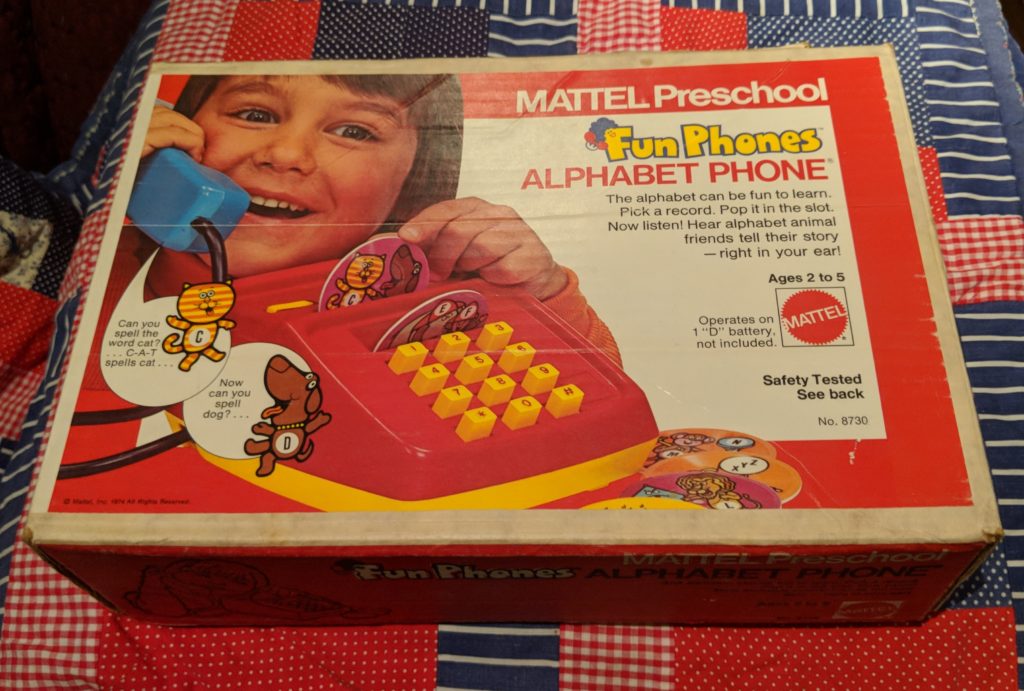
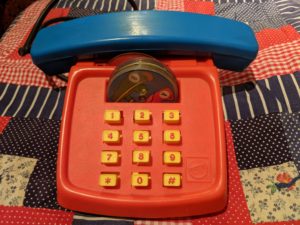


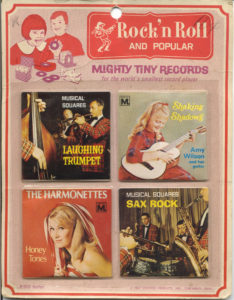
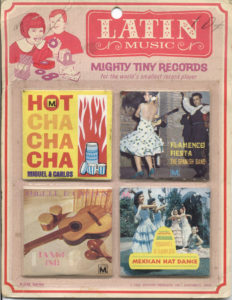
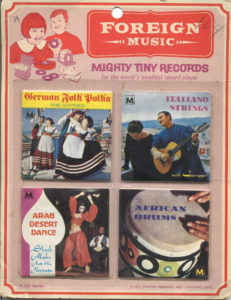
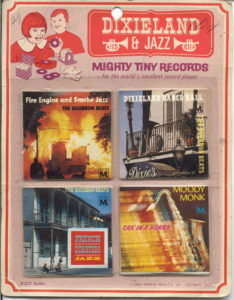
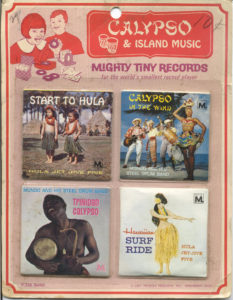
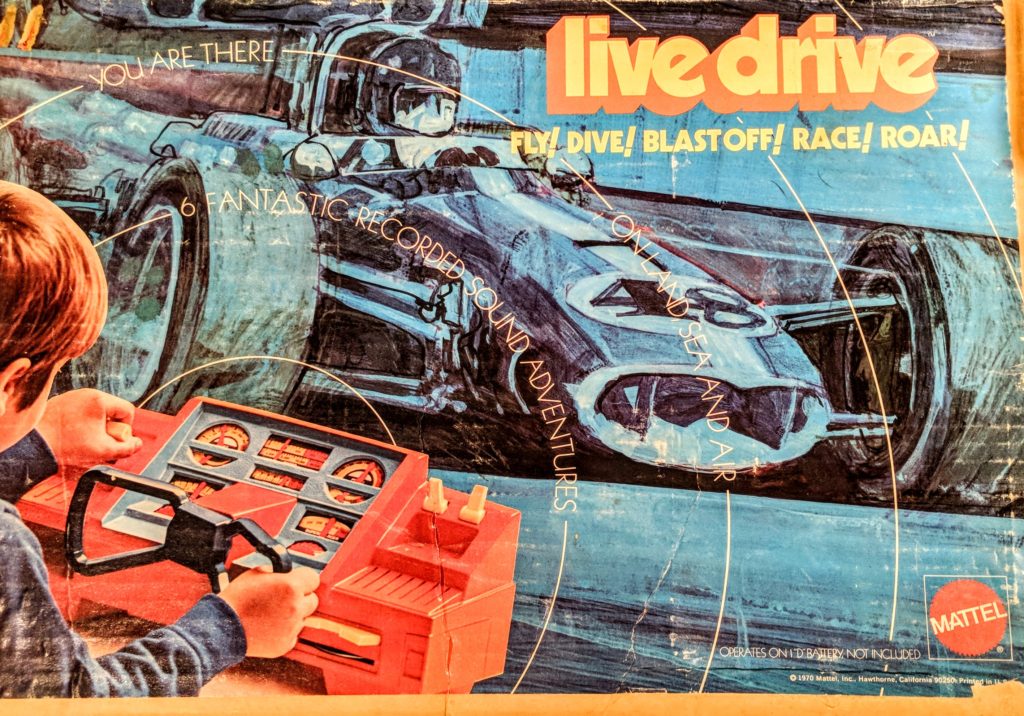
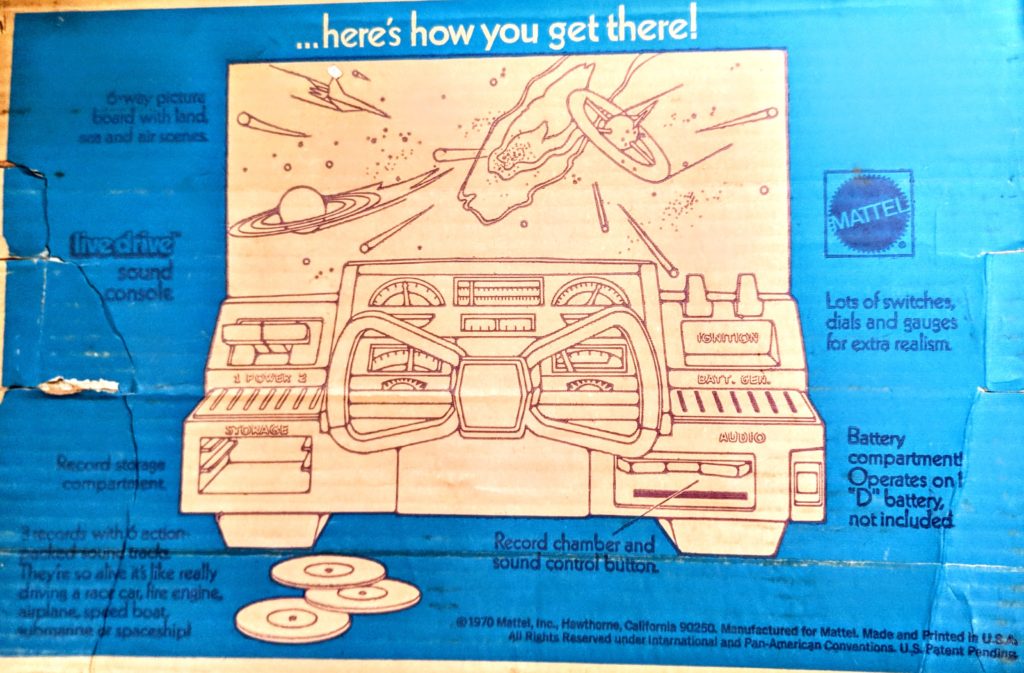

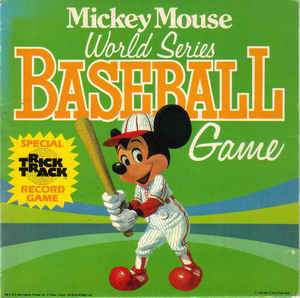
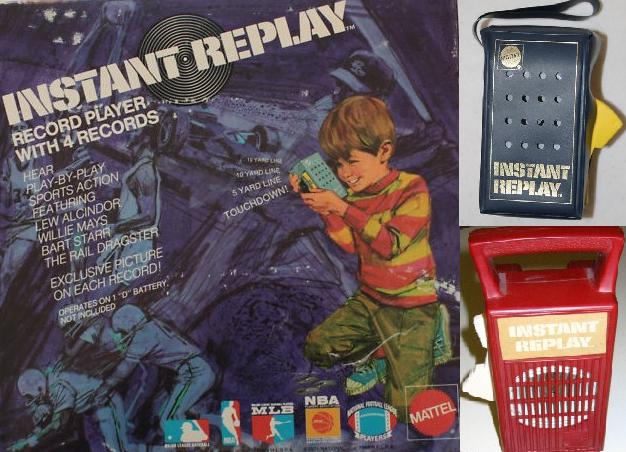
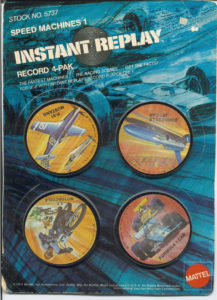


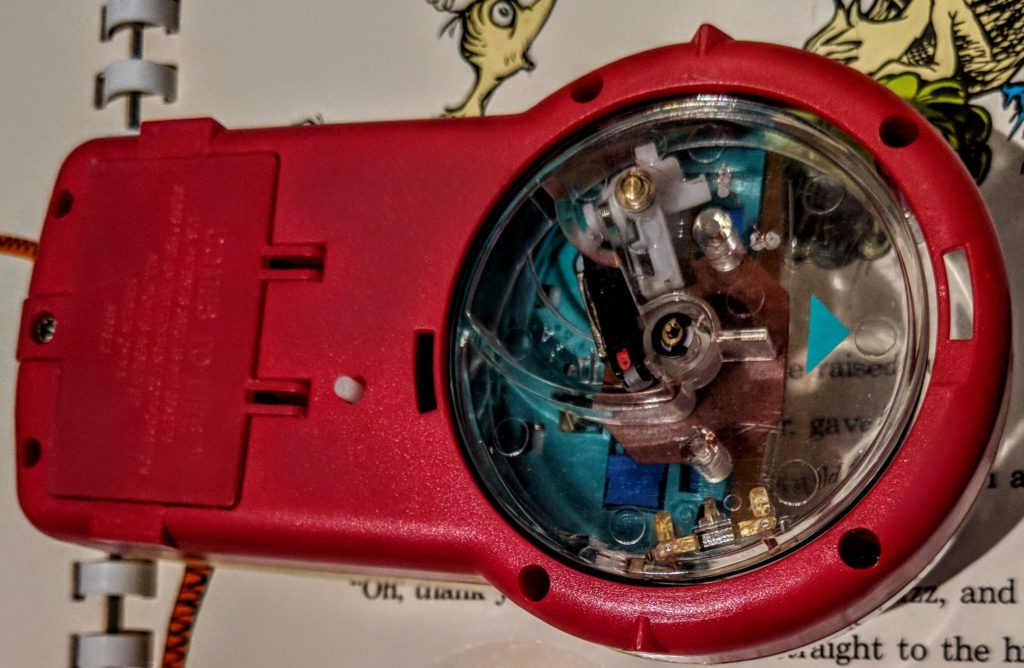
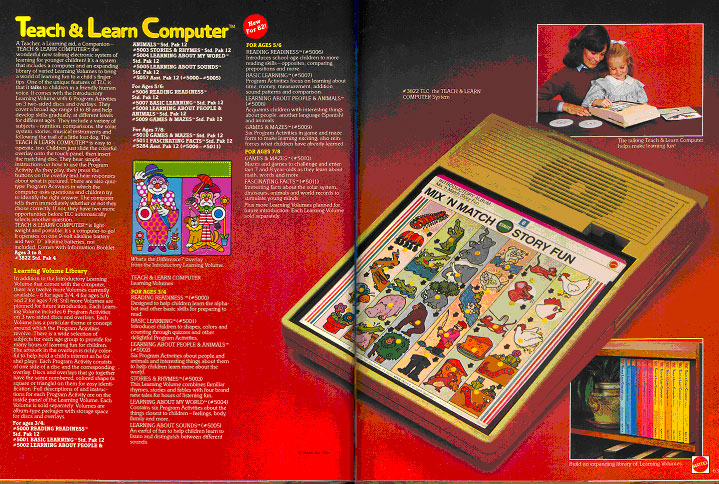
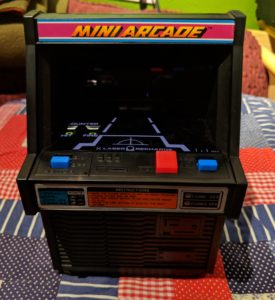

Omg! Thank you so much for this page. My sister and I had been trying to find the name of and any shred of a reference to the “Teach & Learn Computer”, which we had when we were small kids. I was starting to think we had imagined it. Even knowing its name I still can’t find much of anything else out there about it. It seems very close to falling off into the abyss of retro toys. My sister freaked out when I linked her to this page. I have no idea how you came across that ad for it. It was actually a very impressive learning toy for the time. The records must have had some analog data encoded on them, because some of the modules for it got pretty complex, with randomized play sessions. I remember one of the modules, “The Great Fox hunt”, was basically a computerized game of shoots and ladders and even had random events that would tell you to move your pieces around. Some of the events would only occur once every dozen playthroughs or so. So they could get involved with nothing more than a record that had to be mostly analog audio because they included fully recorded instructions and tons of audio clips. Again, thanks for this! Now I am going to go on a mission to try to find any more info about it, or even more golden, a video somewhere or someone using it.
Great recollection of this toy! Some of these are very hard to come by! I love that the records are “random” based on the position the needle lands on, or the locked groove it lands within!